Blended Borders: In Northern Italy, Collio Wine Connects Culture
In the Friuli-Venezia Giulia region of Northern Italy, a border shared with Slovenia helps define the personality of the wine, the culture and the people.
I’m riding along in an eight-passenger van for the second morning in a row, enjoying a bucolic autumnal countryside that could be New England or Northern California, when a chorus of digital pings breaks the reverent silence. It’s incongruous with the scene and a little jarring, but Matteo Bellotto, wine writer and consultant, who has been sitting to my right dropping an occasional fact or pointing out a feature of the landscape, is unfazed.
“Ah, yes,” he nods knowingly. This innocuous interruption to the otherwise peaceful ride, organized for a group in order to explore the region’s wines and culture, is not a foreign occurrence for him. He knows without needing to read our screens that we’ve each received a notification asking if we’d like to activate international roaming. We’ve just crossed the line demarcating the Italian region of Friuli-Venezia Giulia from the country of Slovenia.
This is not the first sign in the last 24 hours to indicate that we’re not in Kansas—or Italy—anymore. Over dinner last night at a small trattoria in town, a fellow journalist asked a common question of tourists in this country: “Where’s the pasta?”

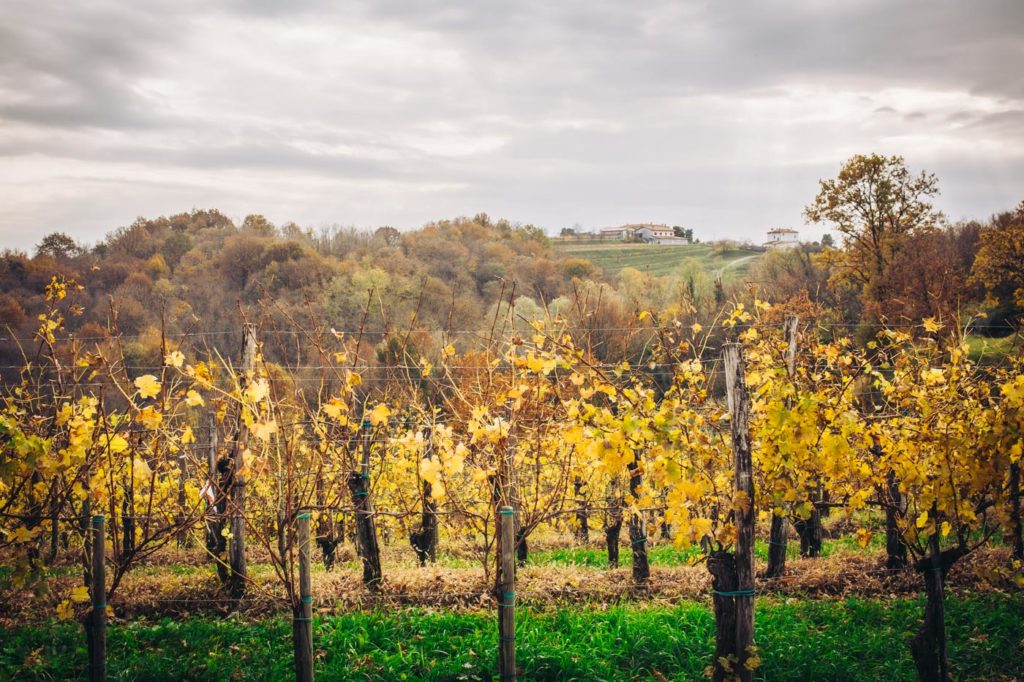
It’s not that what we had in front of us wasn’t delicious, but the meal—in which doses of paprika swirled into farmer’s cheese, sauerkraut and gherkins showed up on plates—would likely have been unrecognizable as Italian food to an international diner.
It’s not uncommon for a country to be culturally flattened by outsiders, reduced by way of some long-standing narrative to a single homogenized land mass with a monoculture of exports. In Italy’s case, that includes pasta, famous wines like Chianti or Piemontese Barolos, Sicilian cannoli, or Neapolitan pizza. But to meet those people bucking that narrative, by writing and sharing their own, is precisely why we’re here in Collio.
And what a dynamic narrative it is, steeped in history and influenced by the border we’ve crossed. Bellotto introduces it via personal anecdote, describing the state of international relations as he experienced it growing up. At the time, he explains that many commodities indispensable to Italians in the area were considerably less expensive in Slovenia. Being so close to the border meant enviable access, but there was also an enforceable limit on those items. Of course, in life—and in Collio—where there are rules, there are those who seek to creatively circumvent them.
When he was a child, Bellotto’s father extended an invitation to his son to go to Slovenia. At the border upon return, his father was asked whether he had items to declare. “He would say, ‘Yes, my son!’” Bellotto says. “I was filled with cigarettes and meat, just like a smuggler!”
The memory is an entertaining and practiced anecdote from a master storyteller, but it’s also real evidence of a fraught era. “That was the story of our lives in the ‘90s,” he says more gravely, gazing out the window as our vehicle wheezes its way higher into the mountains. “That was the period of the [Balkan] war.”
Throughout global history and increasingly in current discourse when it comes to borders, rules often seem to exist only to point out the absurdity of these human-made distinctions, creating conflict when there might otherwise be harmony, raising questions about the relevance of nationhood in an increasingly global world.
“Land has no borders,” Bellotto tells us. “But man does.”
“Land has no borders. But man does.”
— Matteo Bellotto
Bellotto explains that in recent years, an effort has been organized to attempt to prove this in a more quantifiable way, by transforming the combined areas of Collio and Brda, Slovenia, into a UNESCO Heritage Site. It is being argued this area may qualify for this protection “because [they are] border territories with the same goals in sustainability and winemaking and tourism,” he says, along with other economic and ideological pillars.
“It would be the only overborder place to have this [recognition] in the world,” Matteo tells us. This project is not solely related to winemaking, but involves the Brda-Collio terraces as well, a distinctive step-like system of agriculture used for fruit and other cultivations.
His pride is inspiring. It is not a national pride, but rather a pride in the collaborative spirit of his community—a community which is not defined by passport or country code.
The political border, which does not rely on natural distinctions for separating the two nations, bears little importance on the identity of the area’s famous wines. “The terroir is the same from Collio to Brda,” Bellotto describes, gesturing out the window and describing that naturally, many of the wines produced on the Italian side share an exact terroir to those just meters away in Slovenia and vice versa. “You have the same conditions.”
Even the regional names are technically the same. “Brda means [the same as] collio in Slovenia,” he says. The areas aren’t named for historical figures, but rather the type of land on which they are largely comprised—respectively translating to “hills.”
He’s turning our conversation back to the topic of the day, using the relatable and universal lens of wine. Because there’s gold in those hills—the red and white kind, to be specific—in an abundant concentration, given the size of the area. A scant three kilometers from the northern boundary of the Italian peninsula is a rich viniculture. The Collio Consortium (an organization founded in 1964 to preserve the heritage of the area’s wines) counts almost 300 members, and vineyards cover almost 1,500 of Collio’s 7,000 total hectares in a variety of microclimates—meaning about 25% of the total land is dedicated to creating wines.
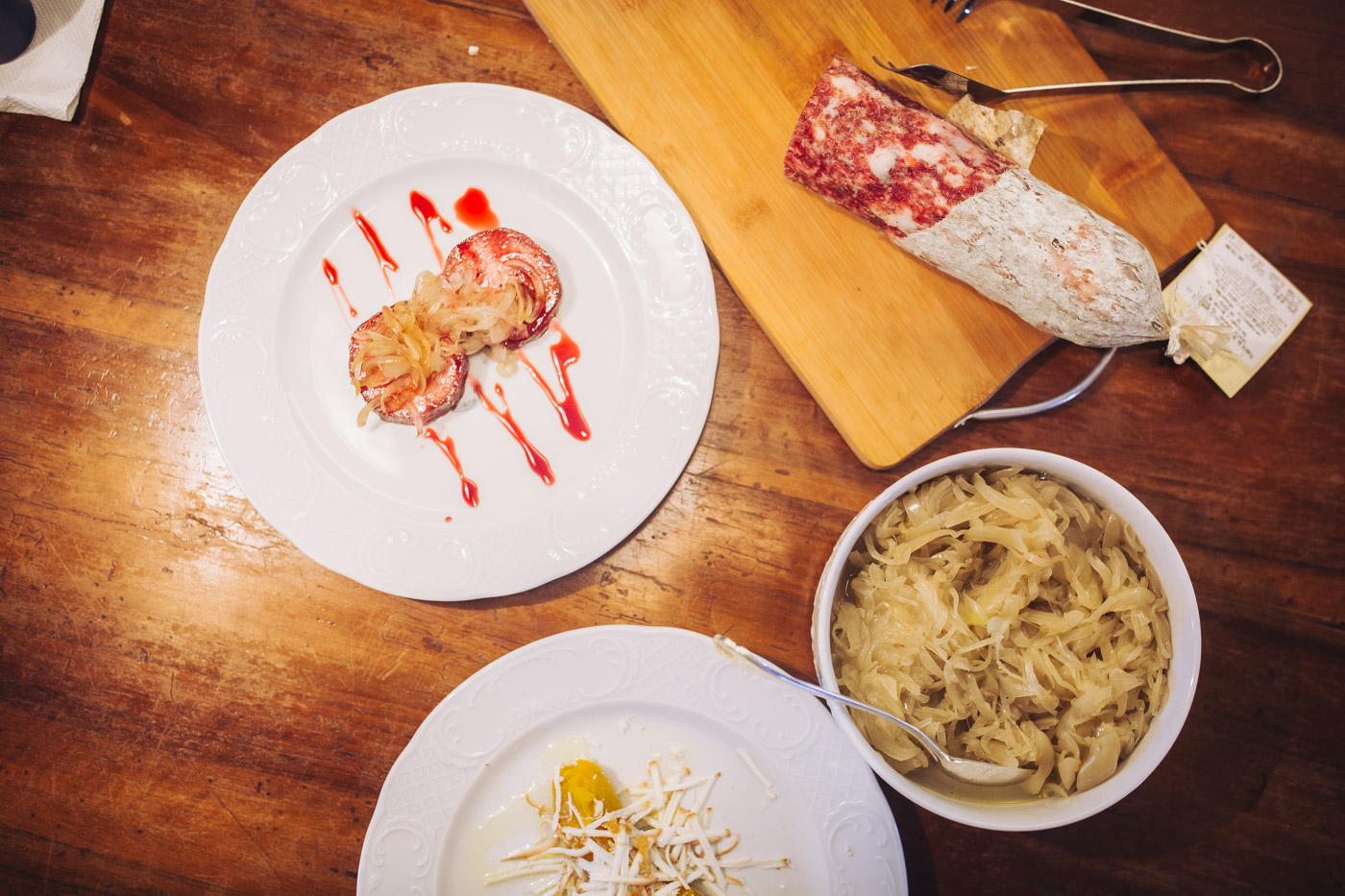

During a presentation on behalf of the consortium, Bellotto refers to the small region’s history. “We were the southernmost part of an empire and now we are the northernmost part of a region,” he explains. As such, Friuli-Venezia Giulia could be a little lost, or cast aside, but its significance is indisputable on the global stage. Despite its diminutive size, the wines are profound, the consortium is proud, and the flavors and production methods are bold. It was also the fourth Denominazione di Origine Controllata (Controlled Designation of Origin) recognized in Italy, established in 1968.
But while they aim to carry on long-standing practices, winemakers in Collio have also proven to be progressive, even cutting-edge in mentality—to the point of instigating a global trending phenomenon, particularly among younger drinkers. If anyone has set foot into a natural wine bar in recent years (which have sprung up all over the world and are particularly popular in the United States), there’s a good chance they’ve spent at least some of that time and money on so-called “orange wines,” which can in actuality be anywhere from the true oranges of copper, amber or even something I might call traffic cone, to paler, straw-colored or near-white versions. But the common quality these wines share is they are fermented on the skins of the grapes (hence the colloquialism, “skin contact”), and that quite a few come from Collio.
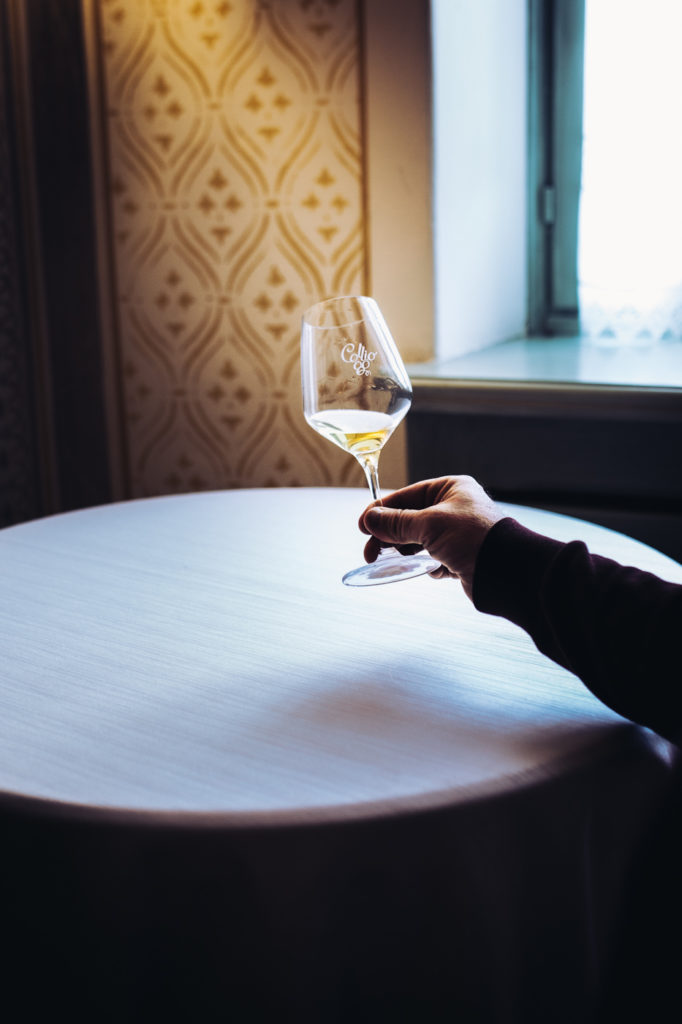
This categorical explosion of popularity in recent years is owed to many factors, but one of them may be the foresight and forward thinking of some of the region’s premier winemakers. Just ask Sasa Radikon, whose wines (sold under his family’s eponymous label) have become something of a cult favorite. We join him at his winery the following day in the Collio town of Oslavia, where he is discussing his father who passed away in 2016, and who seemed to have an almost otherworldly prescience about the potential for an orange wine market.
“He [told me] 10 years ago, ‘You will see that in the future, all the white wines will be made with skin contact,” Radikon says. His father, who focused on French-style whites for which he garnered acclaim, had a sense that the winds were changing and converted to orange wine production as the future of his winery.
His son explains to us that previously, skin contact or orange wine once was considered “garage wine,” consumed mostly by winery workers rather than marketed to customers, but his father relied on his own taste as a litmus test for what might resonate more widely. “He said this will be the future; this is what I like, and if this is what I like, we will probably find another 20, 40,000 people that will like it,” Radikon remembers.
When Radikon took over, he carried this philosophy forward, particularly interested in reaching a new generation of drinkers. “This is the future,” he says. “They will drink all the time. What can we do to bring these people to our world?”
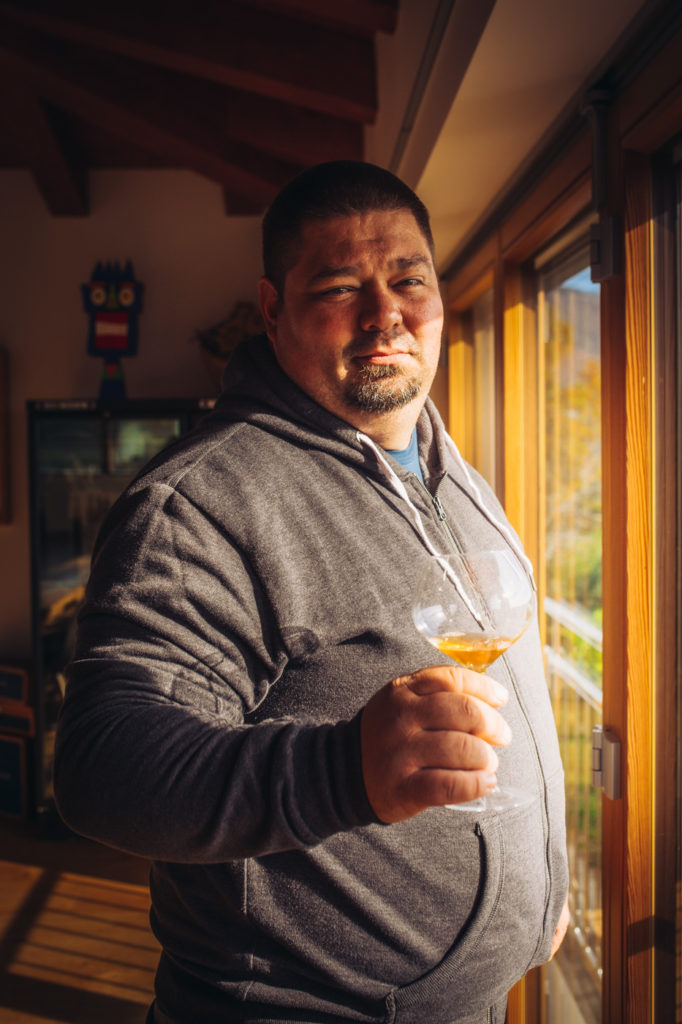
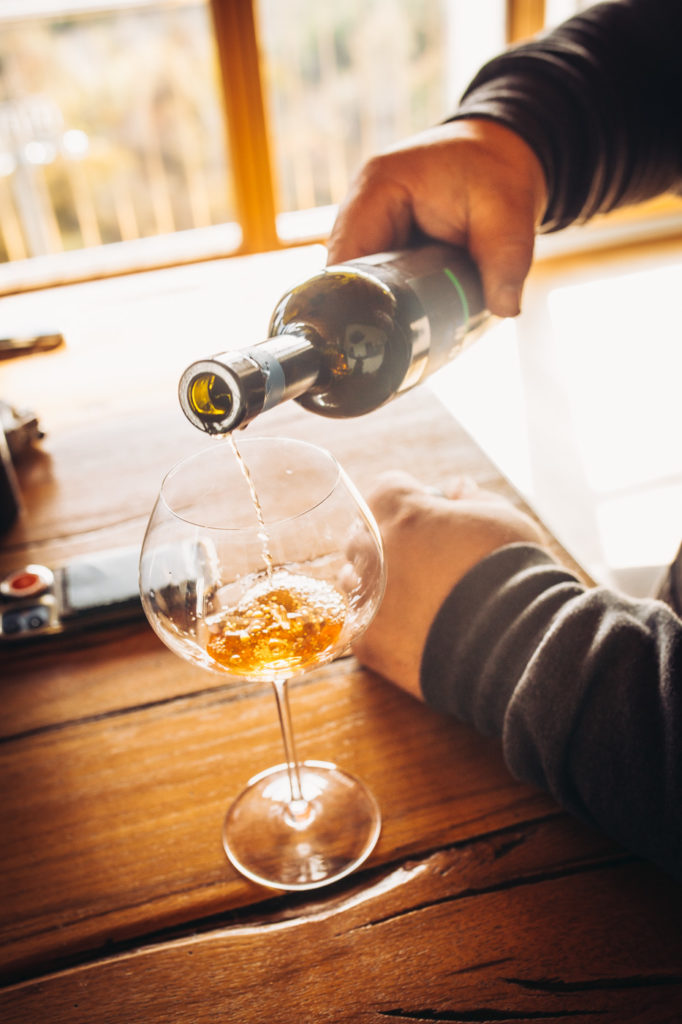
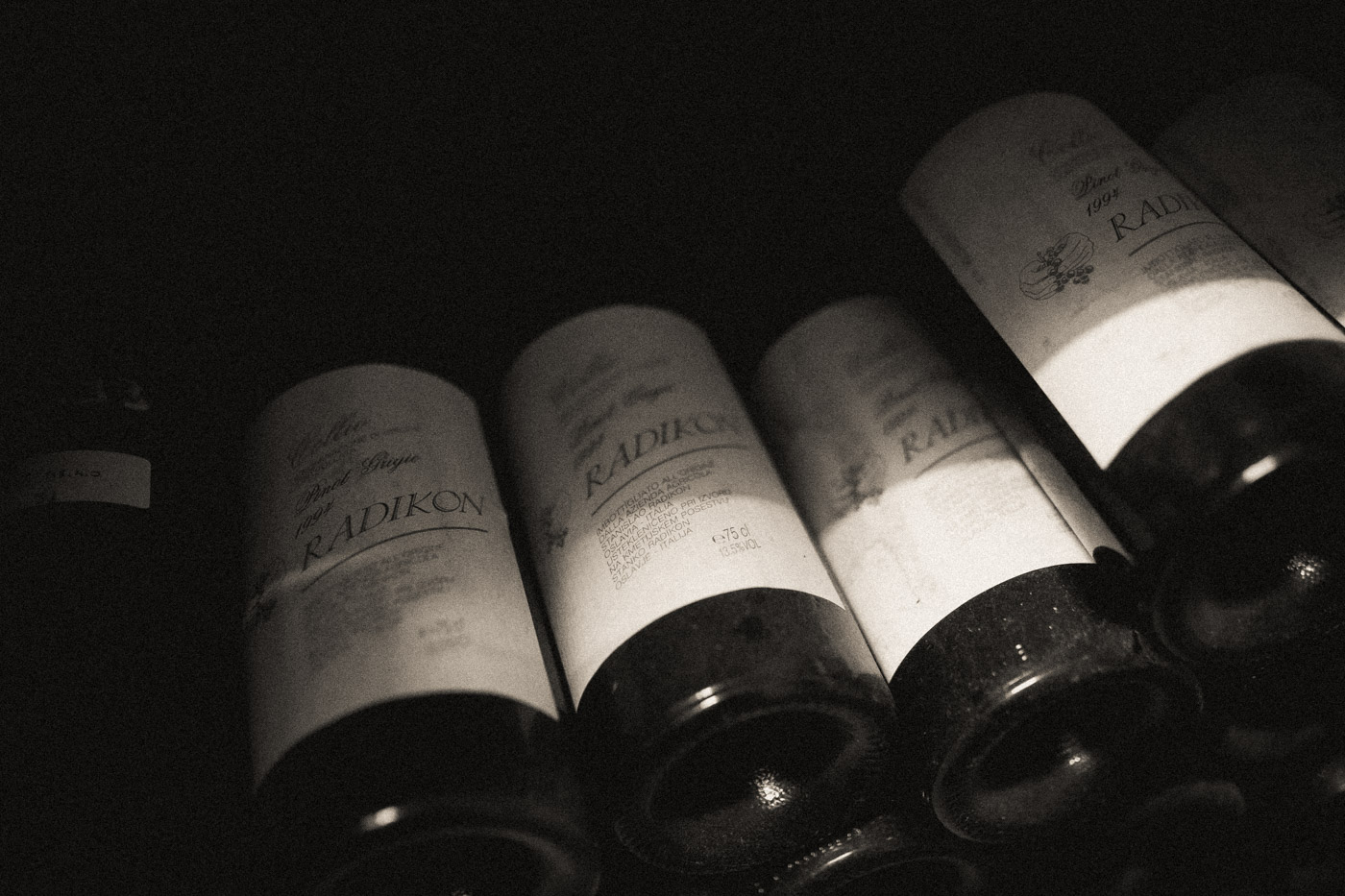
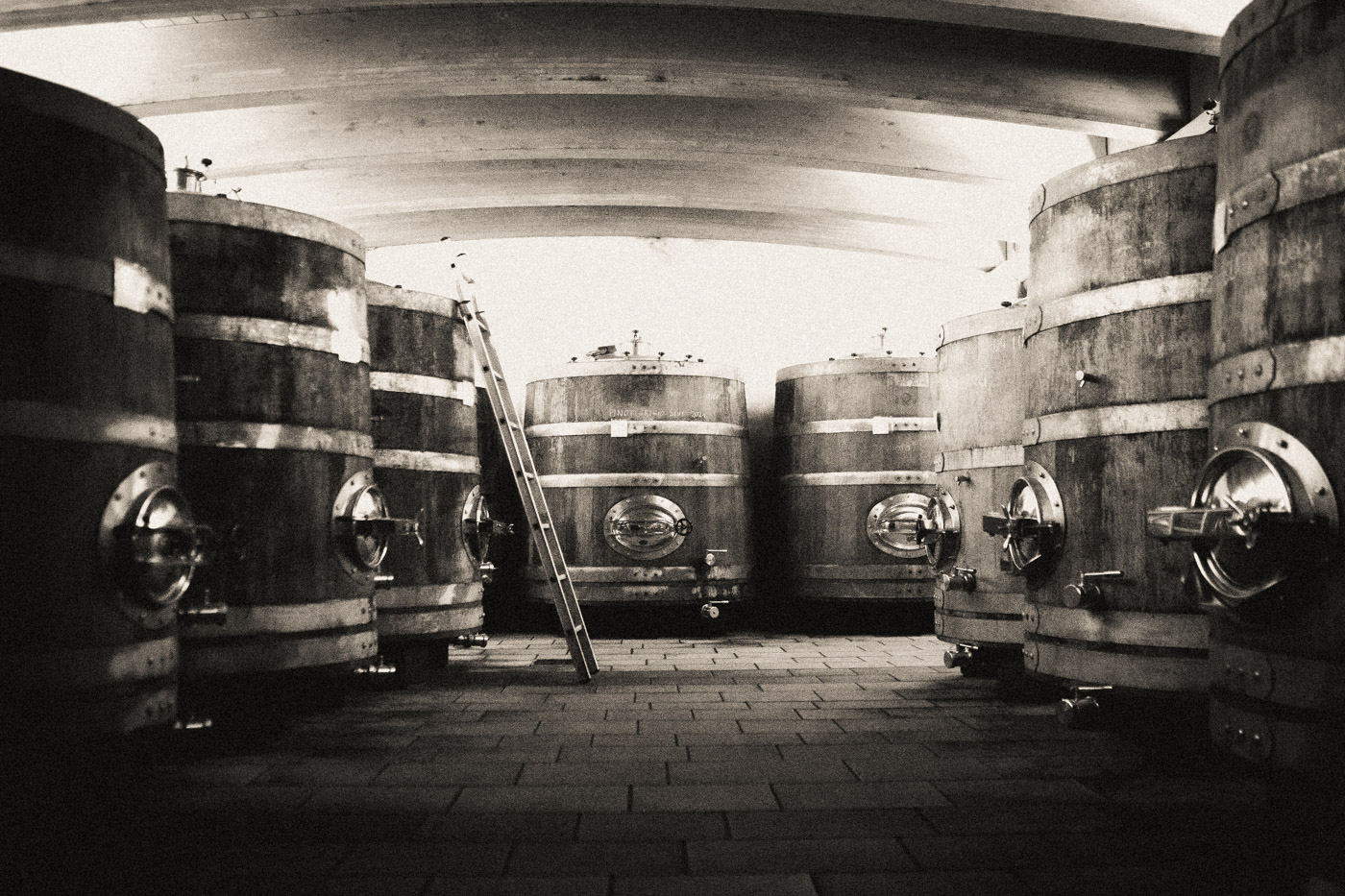
Since physically transporting these future drinkers to the remote Northern Italian border village would be a big ask, he leaned into a production process that would make the wines more available to the outside world. “Shorter skin contact, shorter aging, much more drinkable,” he says of their process. These elements help keep the price point and the flavor accessible for those willing to make a modest gamble on something they haven’t tried before.
He notes that those consumers interested in orange and natural wines are open-minded, unattached to the profiles and so-called rules of more traditional wines. Younger drinkers in particular—the future consumers—come to these styles with little in the way of preconceived notions or expectations. Radikon believes those indoctrinated will loyally evolve with the wines and the winemaker, their palates more adventurous, more interested in what their favorite winemakers are doing at the next level. “Once you’re in this world, it’s difficult to go back,” he says.
Once demand was created, Radikon’s next challenge was to make sure his wines were consistently and widely available. “The restaurants say, ‘If it’s not available, we will not put it on the list,’” he tells us. “This is not good. We want to stay available.”
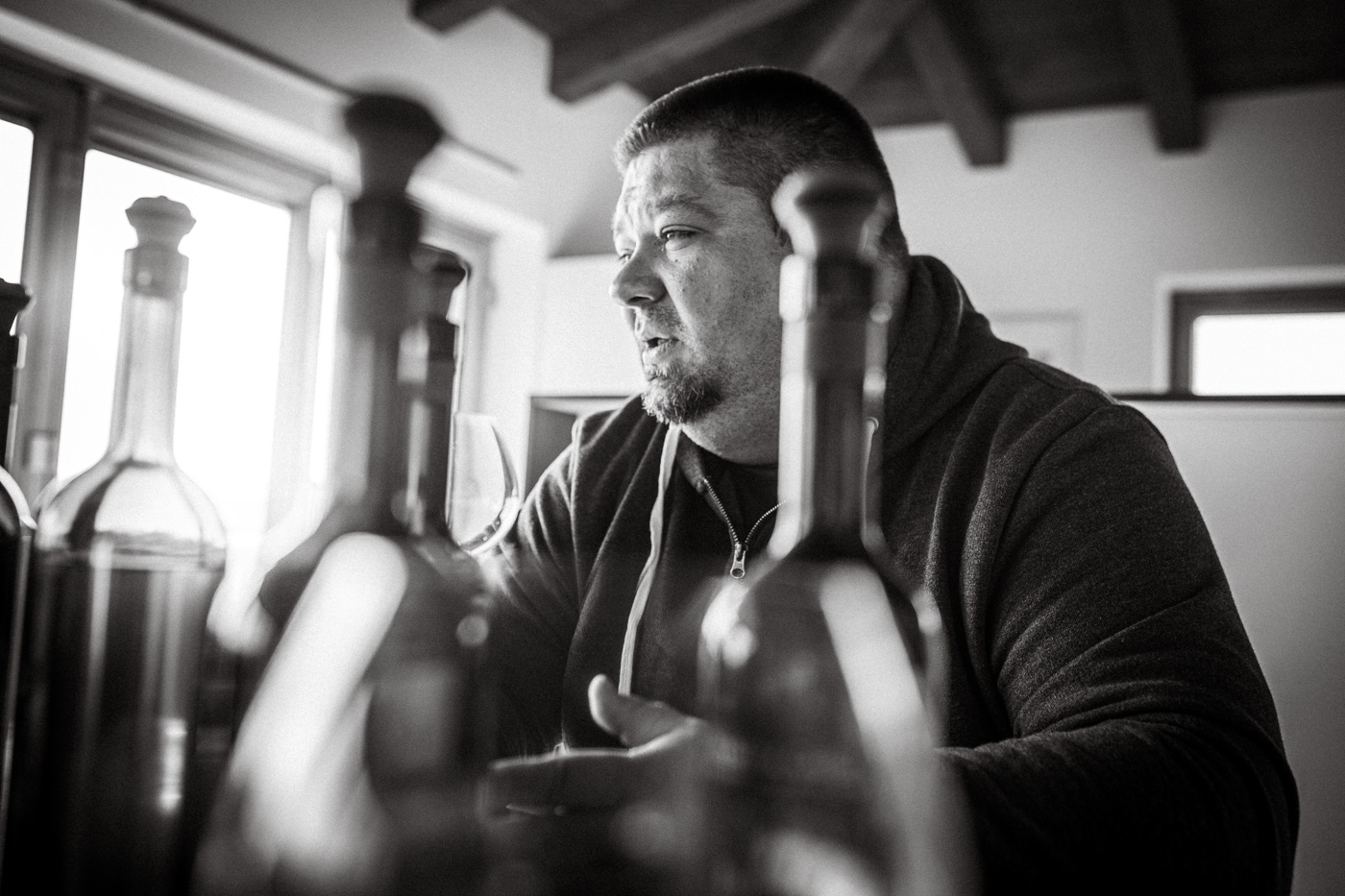
Growth isn’t something that scares the producers in this region. The ability to grow and satisfy global audiences is critical, as Collio winemakers now have a reputation the world over, and Radikon has implemented strategies to expand so it can continue to meet that demand.
But wine isn’t the only Friulian beverage with a fresh sense of momentum—enter grappa into the next generation conversation.
We meet Francesca Nonino over dinner in Collio, where she is seated at a long table populated with some of the region’s most influential winemakers, and where she is discussing her family’s business, which has been producing the spirit since 1897. Her work as the face of the new generation is focused in part on reintroducing grappa to the modern drinking zeitgeist, to prove its relevance as a symbol of artisanal production, as well as its versatility—that it is perfectly at home in a hip cocktail while still maintaining its integrity as a pillar of traditional Italian culture.
Nonino’s products—grappas, an amaro and aperitivo among them—certainly seem to have found a home in these various settings. The last time I tasted a Nonino grappa was at a Brooklyn cocktail lounge. Tonight, we’re enjoying the Moscato grappa in an aperitivo cocktail paired with a hyper-traditional (and incredibly delicious) Friulian dish called toc’ in braide, which is created by topping a bed of pillowy polenta with wild mushrooms, cubes of creamy ricotta, and dressing it all with crunchy cornmeal in browned butter. The combination is a perfect example of the ways in which Friulians are attempting to acknowledge their rich history while stepping firmly into the future.
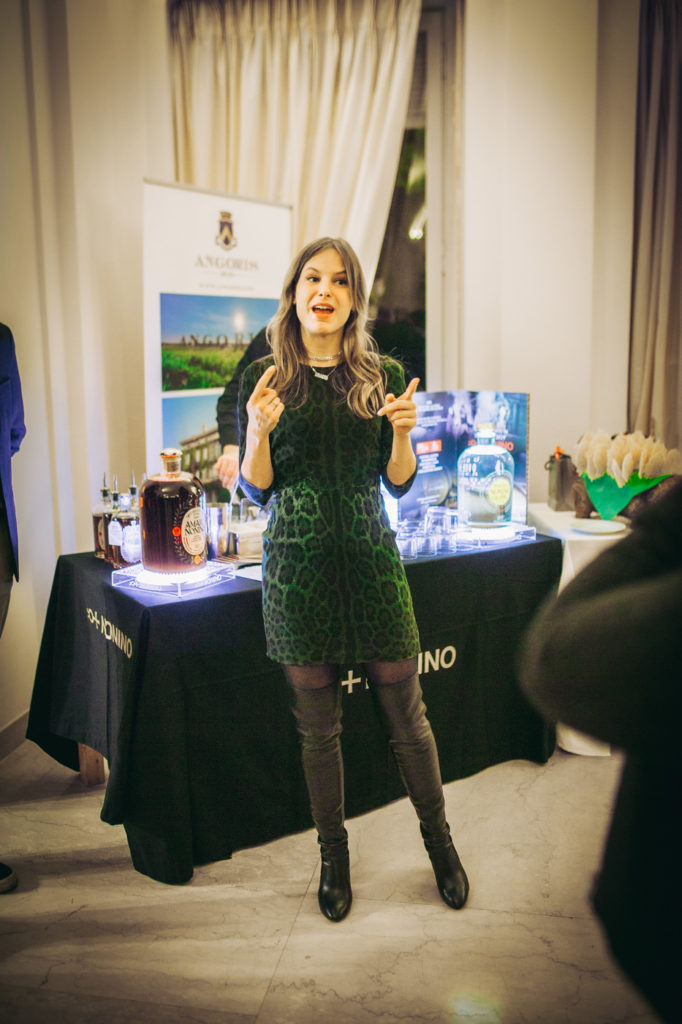
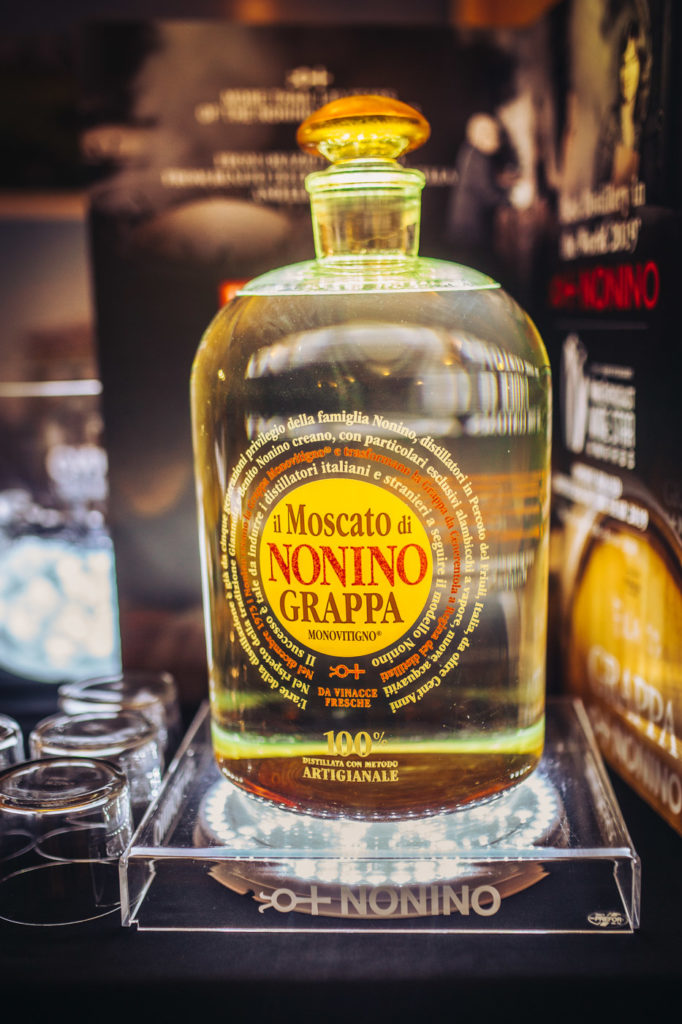
In some cases, that has meant an expansion in the product being offered, as in the case of orange wines. In others, it is a reinvention of the categorical brand, as in that of grappa. “The fundamental effort our generation brought is a new communication producer to consumers,” Nonino says. “Digitalization brought us closer, allowing everyone from any part of the world to enter into the facility of a producer that is willing to show its reality online.”
Nonino herself has around 10,000 followers on Instagram (with another 15,000 for the brand), and has become something of what she refers to as a “grappa influencer.” And thanks to technological outreach, Nonino says her goal to reimagine the way in which the spirit is perceived has been successful. She reports that regardless of region or market or demographic, the image of grappa is no longer that of an Old World spirit relegated to the liquor cabinets of Italian grandfathers, but rather one of style and creativity, with a promising place in the modern bar world. She tells me, “[Drinkers] see it now for what it really is: the distillate that represents Italian culture, history and excellence all over the world.”
Nonino also feels the Friulian identity is foundational to this effort, and that despite an interest in progress and the embrace of technology as a means to spread their message, the next generation of producers will remain true to the spirit of the region. “Friuli people are known in Italy for being honest and reserved,” Nonino says. “That translated in the new generation [with] a deep respect for our roots and tradition—we will never sacrifice the truth for the benefit of marketing. We are always true to ourselves and our work, and this really makes the difference.”
Perhaps the ability to reach outside the traditional boundaries—whether generational or cultural—is built into the DNA of Friulians, given the history of inter-regional collaboration. That doesn’t mean there isn’t contrast between the two, but Radikon reflects on how those differences might prove useful instead of divisive.
“Slovenian culture is very connected to nature, to the environment,” he says, and adds that Slovenians are happy to share what they cultivate. “For example, everyone in Slovenia in the countryside has his own vegetables. And the nice thing is when you know them, they share everything. In the beginning, maybe they are a little bit closed, but after that, you are a part of the family.” He says that Italians, by contrast, may not have the same level of connection to the land, but they have more experience and aptitude to market what they do produce. “Italians are much less connected to the green part … But Slovenians are not able to sell themselves to the world. Italians can sell you everything,” he laughs. “Slovenians are producers, Italians are more managers. Maybe having both together is a good thing.”
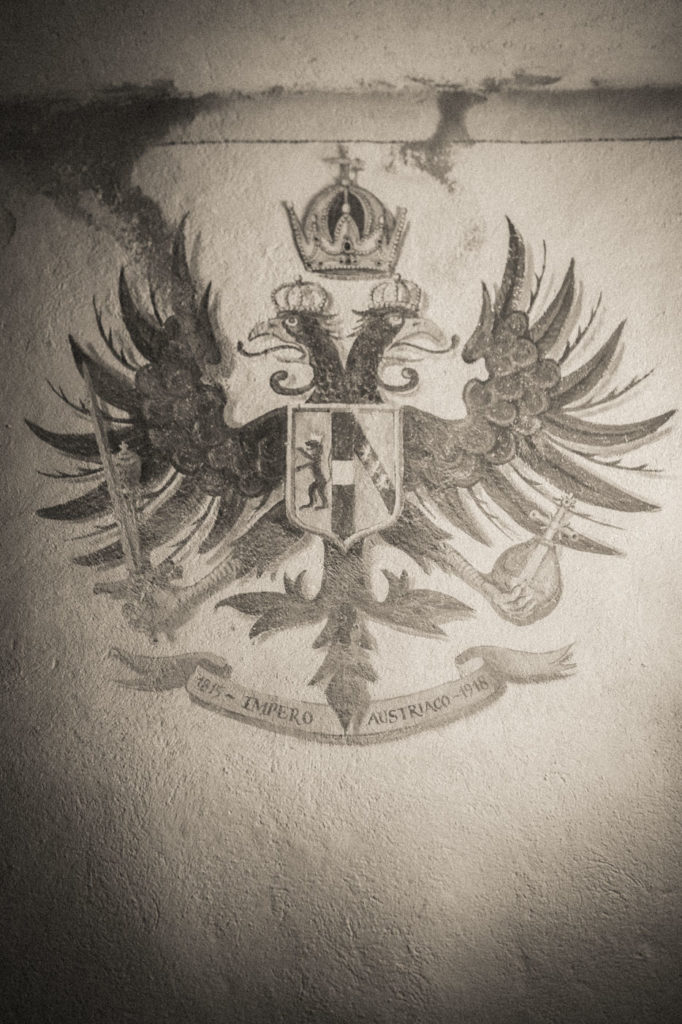
At Radikon, even the custom glassware from which we taste a range of orange wines is a joint effort; Radikon’s grandfather designed the glasses, while they were produced by a fabricator in Slovenia.
While the climates and earth and even the people work in harmony to create products one might call simpatico, the respective governments present much more to contend with in order to foster successful collaborations. “Slovenia is a small country,” Bellotto says. “When you speak with Slovenia, you speak with the minister.” Despite that Friuli as a region is also small, it is not sovereign, and is still governed by the national powers that be in Rome. That means Friulians must travel 600 miles to get close to an answer when attempting to coordinate with their neighbors.
While practical hopes for this international border are on the minds of some of the area’s business owners, the compact area signifies something much larger, far beyond its local limits. It is attempting something not only regionally interesting, but globally profound, acting as a role model for border regions all over the world and demonstrating that to truly make progress may require change, evolving not only as a country, but beyond all boundaries.
Collio has no need to be put on the map. It has always been there, regardless of how and by whom it was recognized. But to learn from its long and complex history—which has yielded complex, innovative and foundational products and stories—is to realize the limitations of these lines in the first place. To wonder what more the world might offer if those within it allowed a more limitless space, encouraged to color outside the lines, and read between them too.
Editor’s Note: This story was made possible with the collaboration of Consorzio Collio who supported our team with logistical and travel accommodations.






Our comments section is for members only.
Join today to gain exclusive access.